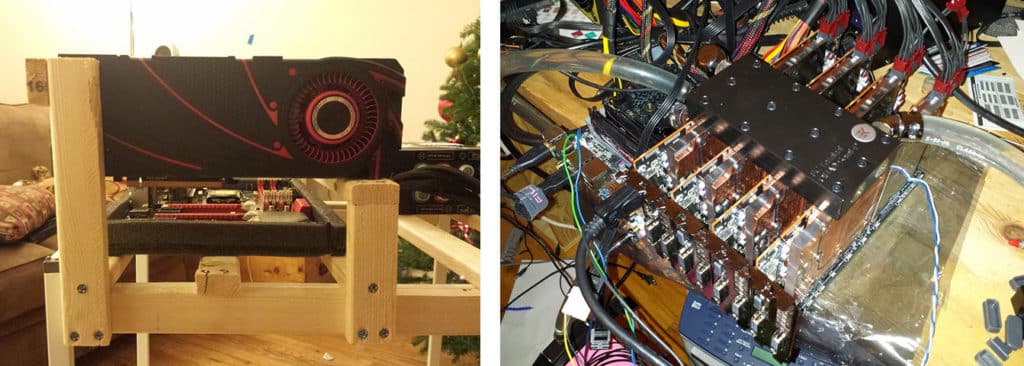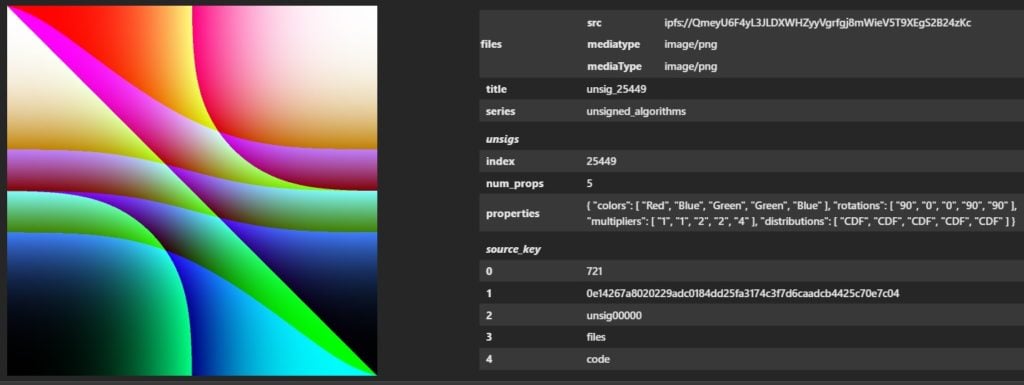Cardano NFT: unsigned_algorithms – The Cryptonomist

This week’s guest on Cardano NFT column is it founder of the first algorithmically generated art on Cardano: unsigned_algorithms.
Last week’s guest was one digital world with its own characters, stories and tastes, with an economic foundation based on blockchain technology.
This initiative is a point of reference for NFTs on Cardano and every week or so we will invite someone to answer some questions and give us one update directly from the Cardano community.
Considering that many of our readers are new to the crypto field, we want one mix of simple and technical questions.
Cardano NFT project: unsigned_algorithms
 The Cardano NFT project unsigned_algorithms is mathematically derived and designed
The Cardano NFT project unsigned_algorithms is mathematically derived and designedGreat to have you here! Can you tell us a little about yourself, where do you come from and what is your background?
I am a liberal arts major who started photography and made many pictures of buildings. Someone asked me, “Why don’t you design buildings instead of taking pictures of them?” which made sense to me, so I decided to become one architect. While in elementary school, I built powerful workstations for my friends, as 3D rendering is gaining momentum. I read about Bitcoin when the pizza was boughtbut did not mine because we all used Nvidia for CUDA, and AMD GPUs were much faster.
Finally got into mining crypto when BTC was going to $ 100, bought 12 AMD r290 GPUs and rigged them to mine. Did it for a while, but FPGAs and ASICs came online and it became clear mining was to be centralized. Decided to sell my hardware and wait for PoS to come out, which took a little longer than I expected. Between that and become active in Cardano in 2019, or so, I moved to India, and back to Japan while working on R & D and new product development.
 Monads Bitcoin mining rig in 2013
Monads Bitcoin mining rig in 2013In the 2 or 3 years before the unsigs were released I worked in AI / ML training models and distribute them to AWS, which was quite far away my roots in Arduino / Processing programmingbut it was a fun trip to make!
Why did you choose Cardano for your NFT collection? What advantages does this blockchain have over others?
Cardano NFTs are quite interesting in that they exist in the base layer of the network. This appealed to me because I felt much safer releases “inert” metadata rather than embossing the inside of a smart contract that may have errors etc. For my first job, I felt much better knowing that the job was secured by the chain’s basic logic and not my inadequacies as a programmer.
In addition, the first thing that comes to mind when I talk to someone in real life about their NFTs environmental impactand of course Cardano as Proof-of-Stake does not have near the carbon footprint of a Proof-of-Work chainso it’s a kind of table effort to even have a conversation.
Typically, NFTs have IPFS or Arweave links in their metadata that redirect to JPEG, GIF, or other files, but unsigs are different. Can you explain?
When I met NFTs, my reaction was, “Why would anyone pay for a link to a JPG?” The best answer I could think of was to make sure NFT was NOT just a link to a JPG, so I tried to think of what I could fit within the 16 KB size limit for a Cardano NFT.
It became clear to me that by including code and an environmental definition for running that code, you could essentially “compress” NFT and make NFT contain self-generating instructions: in the form of notes or an architectural blueprint. By doing this, NFT is not just “the deed of a house”, but a kind of self-inflating / producing house.
 A piece from the unsig collection with associated metadata on the right
A piece from the unsig collection with associated metadata on the rightThis is a pretty old idea in art: oh look critically at the medium / materials you use and to explore what they are (and are not) good at and try to get them to sing. In architecture we refer to this as “material honesty” – use materials in ways and ways that exploit their properties and do not try to hide what they are.
What are you working on now? Is there anything waiting for the future of unsigned_algorithms?
I have a few projects I work on as a goal increase the signal-to-noise ratio of the NFT space on the Cardano. One of these is my next work of art that will be given away to holders of unsigned_algorithms. The first piece from that collection was marked on Cardano back in January with 31,119 factions, which was distributed to the owners of unsigs and is now traded on various DEXs on Cardano. In addition to being a fraction of the first piece from the collection, a part will be needed to emboss a piece from the rest of the collection.
The second project is one that aims reduce the noise floor in the NFT space at Cardano and should be launched “soon”.
Thank you for taking the time. Any last words? Where can people find you?
I spend too much time on Twitter. I am also active in Lisbon’s crypto community since I moved here a few months ago.
Disclaimer: The opinions and views of the people interviewed are their own and do not necessarily reflect the Cardano Foundation or the IOG. Moreover, this is the content for educational purposes, it does not constitute financial advice.
Source: https://en.cryptonomist.ch/2022/07/09/cardano-nft-column-unsigned_algorithms/
Disclaimer: Cardano Feed is a decentralized news aggregator that enables journalists, influencers, editors, publishers, websites and community members to share news about the Cardano ecosystem. The user must always do their own research, and none of these articles are financial advice. The content is for informational purposes only and does not necessarily reflect our opinion.

























